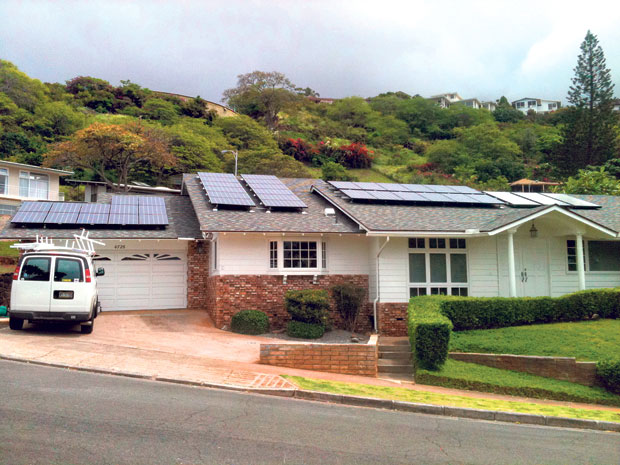The installation of a photovoltaic system requires attention to many details. Building inspectors have noted that many systems are being installed with poor installation practices. Concern in the industry over what changes need to be made in the building code are now being considered because of the absence of design criteria in the code that addresses the shortcoming in the existing code.
Pacific Islands Construction believes that these shortcomings once addressed will provide the consumer a better installation. The following issues are in need of attention and should be examined prior to your purchase of a photovoltaic system:
• Solar panels or modules are generally installed on roofs. The roof penetrations for the racking systems have waterproofing issues requiring proper roof flashings to insure the roof will not leak. Caulking or special mastic materials do not work over the long haul. Only industry standard roof flashings that isolate the roof penetration by design and will not void your roof warranty should be installed.
• There is the issue of the wind uplift or modules being torn off the roof during high winds. If the racking system consists of field fabricated channel metal and/or is just bolted to hold it in place, it has a high probability of failing during high winds. These installations do not have tested assemblies to meet wind uplift ratings. Building inspectors have noticed that many installations are relying on skinny lag bolts setting up off the roof to keep the modules in place. Common sense tells you that they will snap during high winds, and this type of installation has to change.
As the industry evolves, standards for PV installations are essential to ensure the public that the right thing is being done to protect the consumer from poor installation details. Anyone can quickly install a poor installation and charge a lower price, but in the end, the customer deals with the consequences.
The purchase of a photo-voltaic system is not only a price issue. The quality of the module, the installation/flashings used on the roof, manufacturers’ track records, and contractors’ attention to details should all be considered. The servicing of the equipment is also an important element, and we have programs in place to provide our customers peace of mind.
Pacific Islands Construction believes that an informed consumer will make the best decisions, and the company strives to provide customers with the best information available. The company also provides third-party reports, shows the differences in the module construction, and provides details on all phases of installation or construction.
Contact Pacific Islands Construction by calling 841-7756 for a consultation or visit the website at pacificislandsconstruction.net. The company’s goal is to provide complete satisfaction now and into the future by providing customer service.
CONTACT: 841-7756
WEBSITE: Pacificislandsconstruction.net

See more articles from: Pacific Islands Construction